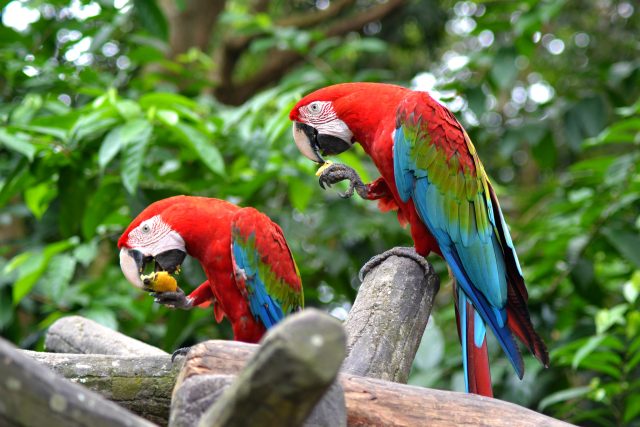Lots of macaw parrot skeletons and feathers have turned up at human settlements in the southwestern US and northwestern Mexico dating back to at least 900 CE. Given that these sites are at least 1,000 kilometers north of the birds natural range, it has long been clear that there was an interesting story here. How were macaws traded between cultures and over such long distances, long before the arrival of the Spanish and their horses?
Between 1250 and 1450, a settlement discovered at Paquimé in Mexico seems to have hosted a macaw-breeding program that must have met the demand for this culturally significant bird in the region. But what about before Paquimé? Archaeologists have debated the possibilities: that traders frequently traveled the long route to bring back macaws, that birds were haphazardly traded between settlements, or that there was an earlier breeding post.
A study led by Penn States Richard George sought to answer this question using DNA from scarlet macaw skeletons found at New Mexicos Chaco Canyon and Mimbres settlements. Techniques to recover fairly complete DNA sequences from archaeological specimens have advanced in recent years, allowing researchers to test hypotheses with much more confidence.

They also carbon dated the skeletons, finding that their specimens lived between 900 and 1200 CE—so clearly predating the breeding at Paquimé. Of the 20 macaw skeletons they analyzed, the researchers managed to collect a sufficiently complete mitochondrial genome from 14.
Because mitochrondrial DNA is inherited unaltered from the mother, it makes a great marker for comparing populations. In this case, the researchers compared the archaeological specimens to a database of modern (1800-present) scarlet macaw populations. There was very little difference between the 14 birds. They all fell into the same macaw group, which can be found in northern Guatemala and nearby southeastern Mexico.
Other genetic groups can be found in that same area, so its extremely unlikely that traders were periodically capturing birds and transporting them to New Mexicos Chaco Canyon. If that were the case, you would expect to find birds from multiple genetic groups.
Instead, the researchers believe the best explanation is that someone captured a few birds, took them somewhere much closer to Chaco Canyon, and set up an isolated breeding population. In that situation, the genetic diversity would remain very limited.
That would point to an undiscovered settlement out there somewhere, breeding scarlet macaws in the centuries before Paquimé was established. And it highlights the fact that cultural and trade interactions were common between many of the peoples living at the time.
Its a pretty detailed story to be able to tell from a few bird bones. Scarlet macaws were clearly valued and important enough that people went to great lengths to obtain them. And it seems that somewhere, someone was carefully raising birds to trade with communities across the region.
PNAS, 2018. DOI: 10.1073/pnas.1805856115 (About DOIs).
[contf] [contfnew] 
Ars Technica
[contfnewc] [contfnewc]







